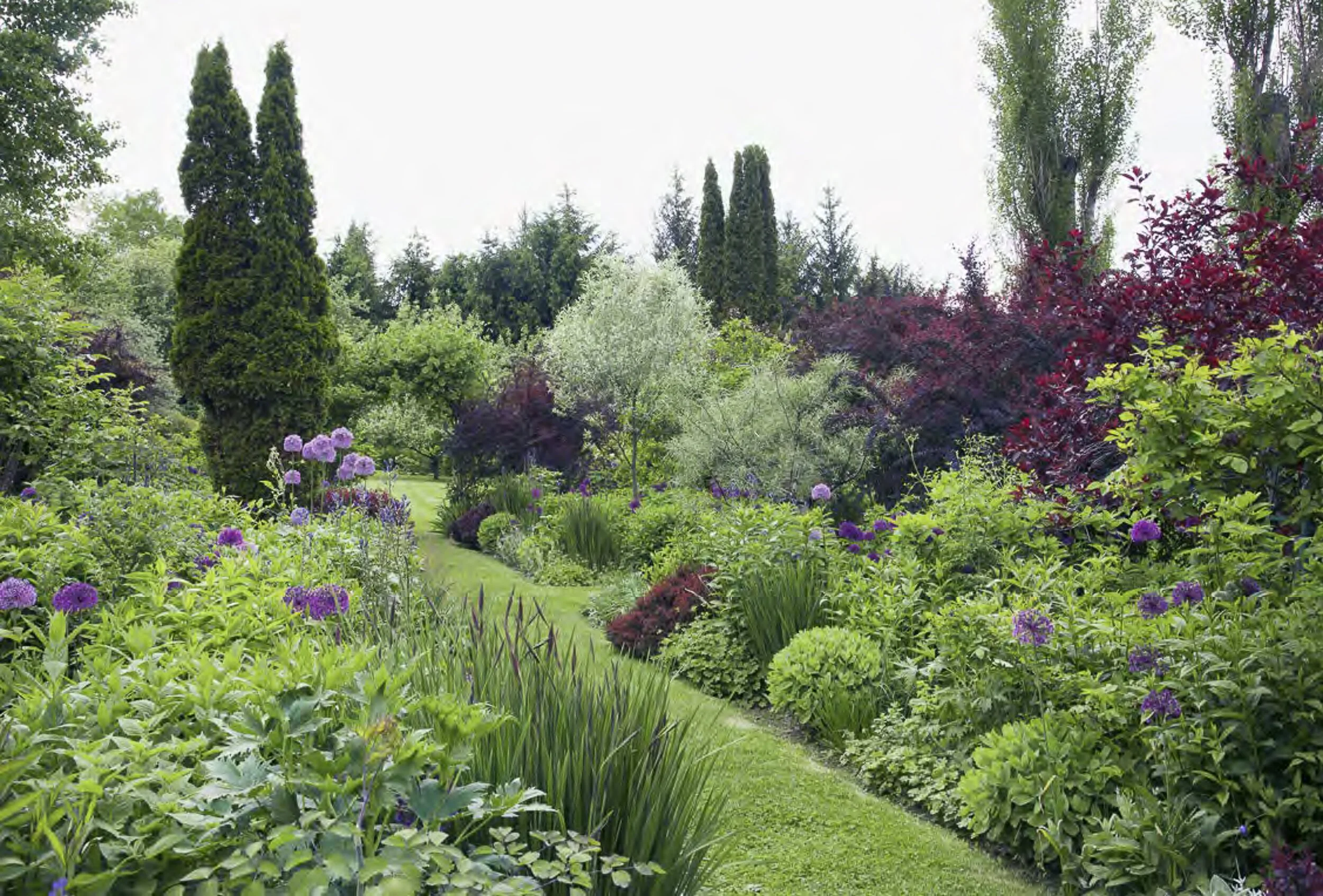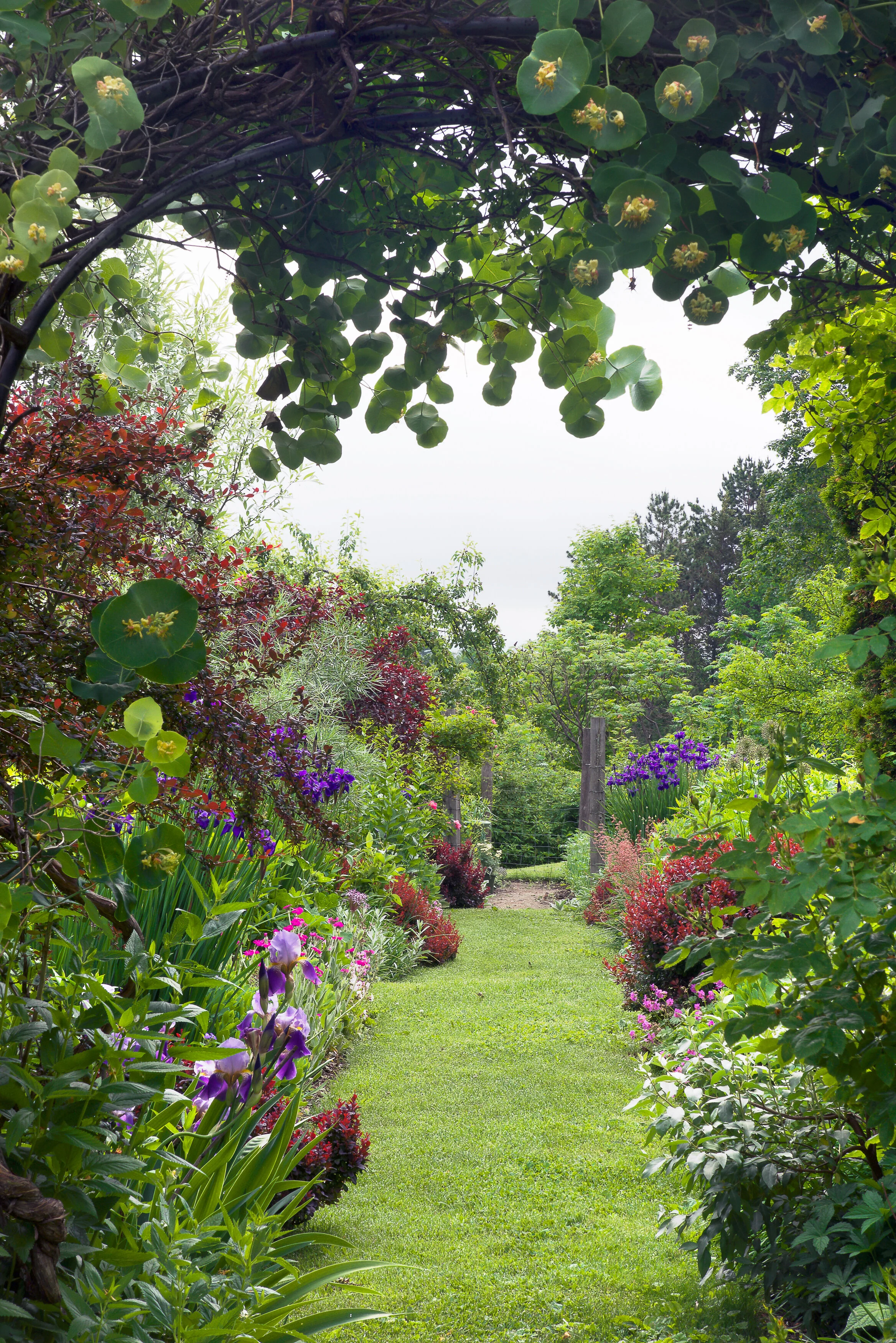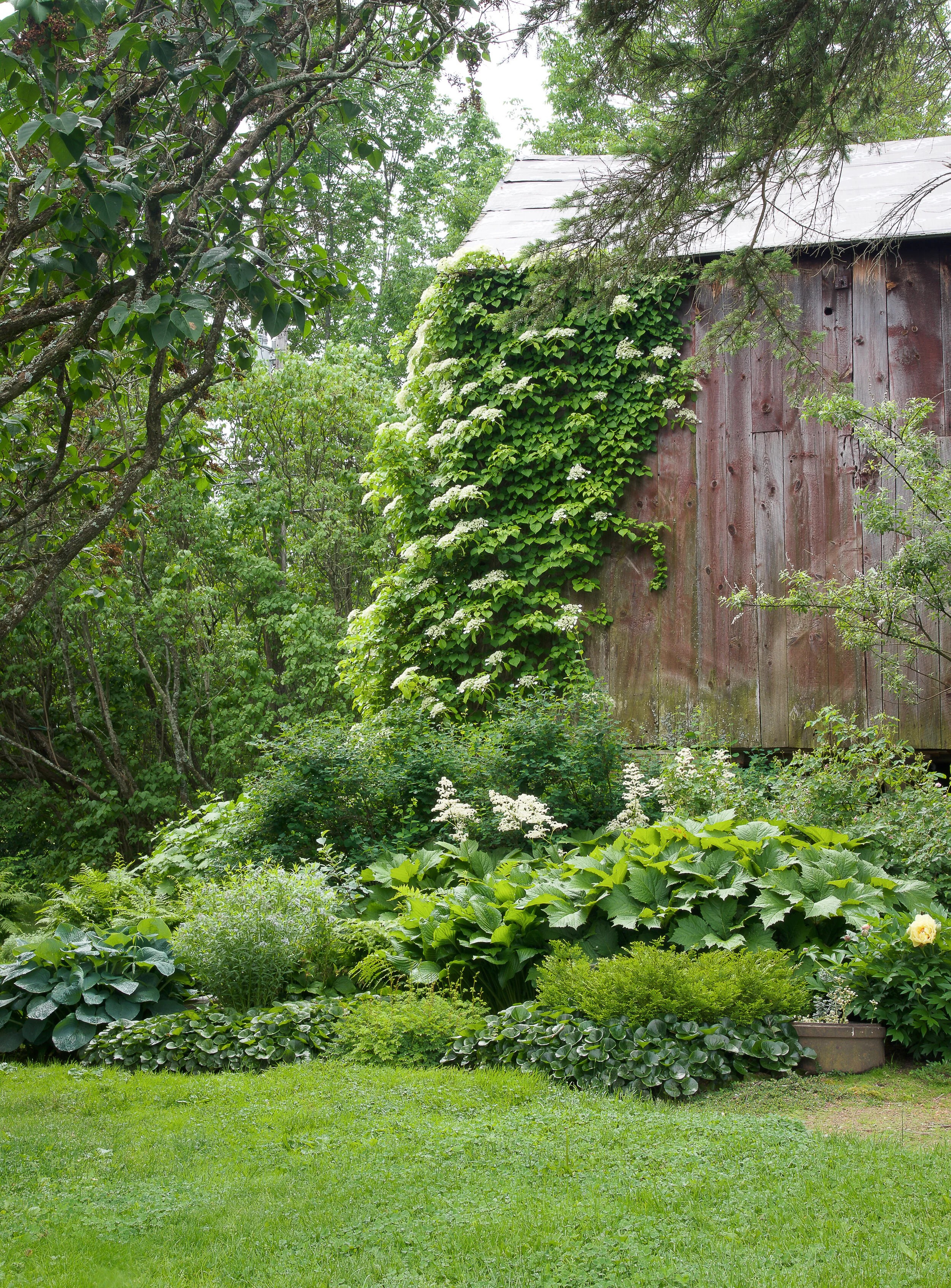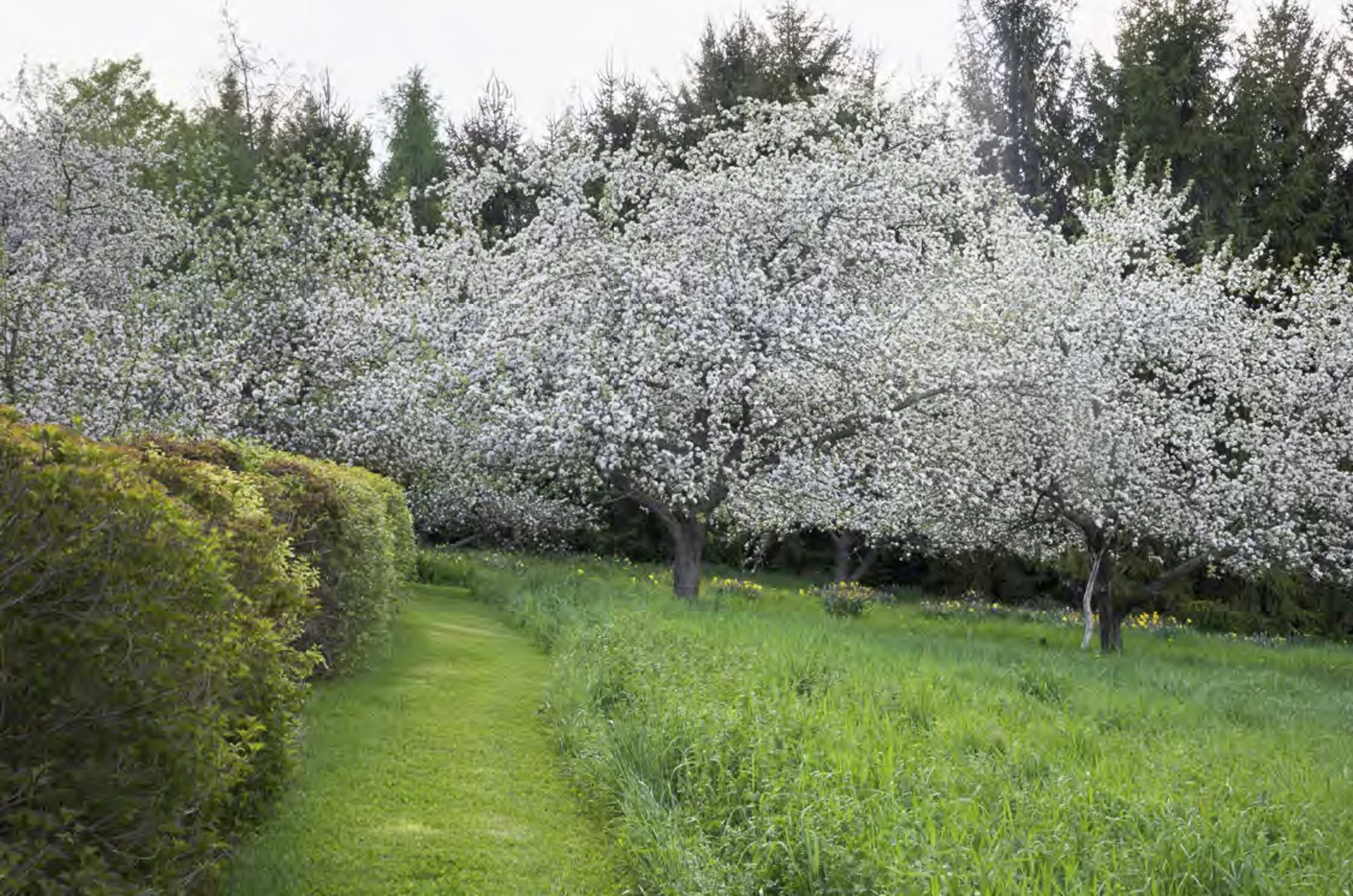Review of Spirit of Place: the Making of a New England Garden by Bill Noble
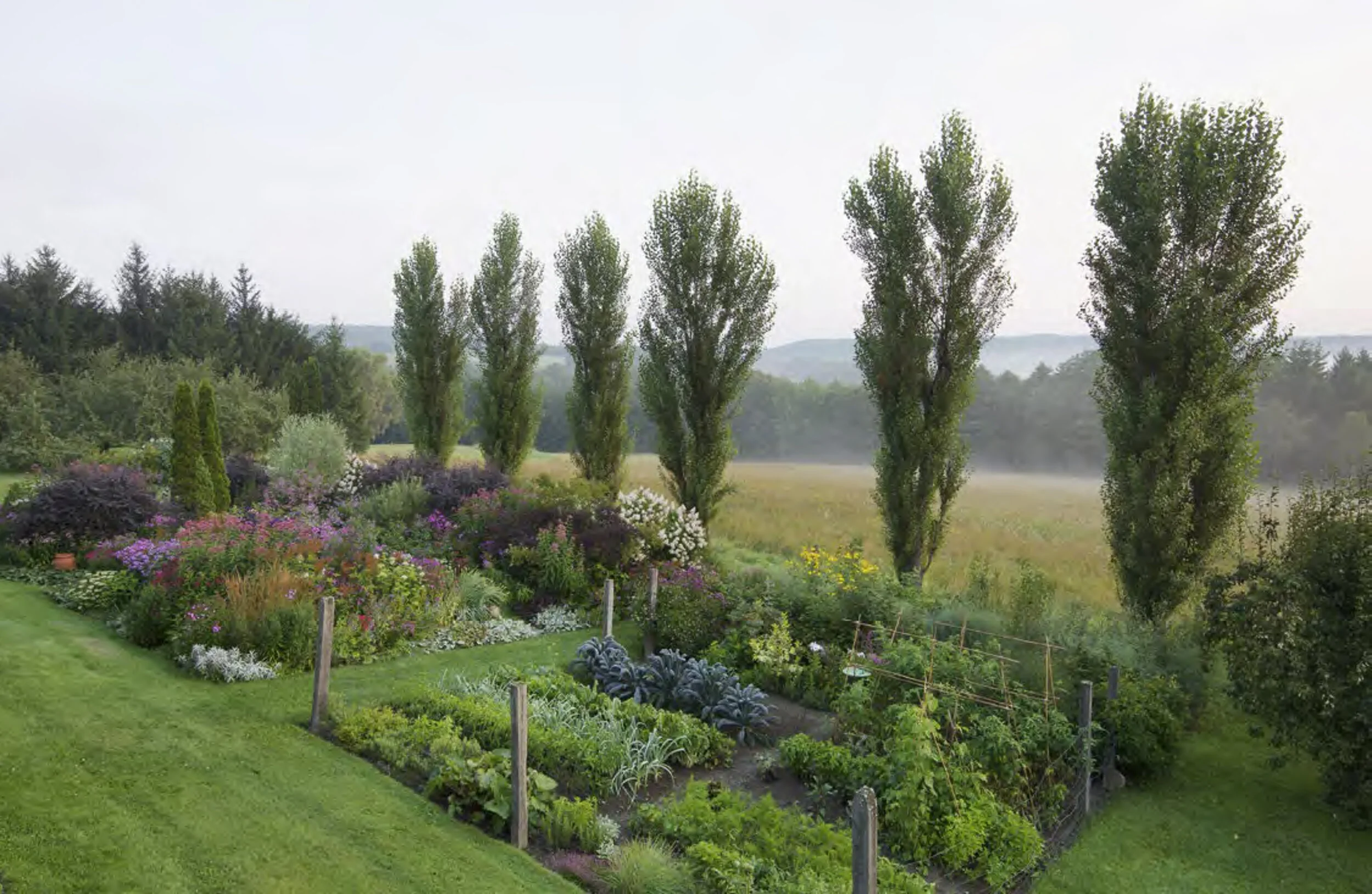
Spirit of Place: The Making of a New England Garden is a relaxed, richly layered account of the creation of Bill Noble’s garden over the past 25 years. The writing flows like a long, gentle river from one part of the garden to another, from one garden to another, from one time to another. This a beautifully produced book, lavishly illustrated with photographs, all Bill’s own, and of a handy size and weight to make for easy reading and handling. It promises to be one of the important American garden books of this year, and I recommend it with great pleasure.
I’ve been in love with landscape all my life, though I didn’t realize it until I was well into maturity. I’ve always remembered places (and time, sequence, buildings, people) as modes of landscape. For me, landscape is the way the mind works. Our thought processes, our memories are rooted in landscape, both terrestrial landscapes and landscapes we carry in our minds.
Reading Bill Noble’s new book—Spirit of Place: The Making of a New England Garden—about the creation of his garden in Vermont—was both insightful and a delight. The book is very much about landscape and the ways in which spirit of place lives in the land.
But it is much more than that.
The Flower Garden
Bill covers the essentials at the beginning, the history of the farm on Bragg Hill Road (what an evocative name that is … ), Bill’s first thoughts on seeing the house he and his partner Jim thought to buy in 1991 (‘Jim led me through a passageway to show off the view, and my heart sank. How was I to build a garden to match that view?’). He writes about other gardens he has loved, and that influenced him, gardens in Italy, England, and America, especially the gardens of the Cornish Artists’ Colony that developed after Augustus Saint-Gaudens took up summer residence in Cornish, along the Connecticut River in western New Hampshire.
And he tells us far more. Bill has many years of experience in garden preservation, having been director of landscapes at The Fells, a historic garden in New Hampshire, and director of preservation for the Garden Conservancy for 15 years, so he has much to tell us about gardens, their history, and their techniques.
Bill Noble’s garden is set in the beautiful Connecticut River Valley, an exquisite place for a garden … but one that also requires attention to significant issues of scale. I know the Valley well. We have friends who own an inn in the White Mountains, and we’ve driven the highway up and down the valley many times. It is large and, in parts, painfully Picturesque. Before the Bragg Hill house was even bought, Bill realized he would need to find a way to make the garden sit well within the larger landscape. His solution turned out to be simple but brilliant; he planted a row of amply spaced Lombardy poplars to separate garden from landscape—to my eye, the garden’s defining feature.
The Flower Garden has two axial paths, a formal feature in an informal, old-fashioned garden.
Even before reading the book, I felt I knew this garden. A bit strange, I admit, because I’ve never been there. I saw Bill present his garden at Hollister House a few years back, and since that time I've remembered the stunning effect of those archetypal Lombardy poplars. With a few tall Arborvitae (Thuja) spires and bulky shrubs echoing the broad landscape, those poplars are a marvelous intervention, drawing the eyes to the garden, to the sky, and to the unbounded landscape beyond, ‘mediating’ between garden and landscape to use Bill’s very apt term.
This bit of serendipity—placing the Flower Garden and Vegetable Garden side by side—is one of the charms of this garden. It’s a happy choice, a gentle reminder that the garden is a family farm reborn.
The Flower Garden was the first garden Bill began, and it remains the heart of the garden. Its location at the edge, adjacent to the field beyond, gives it great prominence, as does its size (65 by 45 feet). Since the property of the Bragg Hill house is long and narrow, the constraints of the site forced him to build the Flower Garden and the Vegetable Garden side by side. This was a bit of serendipity, one of the charms of the garden. It’s a happy choice, a gentle reminder that the garden is a family farm reborn. The ideas of utility and beauty live side by side. The garden is full of such subtle references to the garden’s spirit of place, and to its origins as a working farmstead.
A view down the main axis of the Flower Garden.
The garden is an engaging mix of the formal and the relaxed. Though formally divided into quadrants with two cross-axis paths, it’s not enclosed in a formal hedge. Leaving the exuberant plantings open on the sides invites visitors to enjoy plant details that might otherwise be hidden from view. The loose, bumpy edges of the plantings have a natural irregularity that also links the shapes within the Flower Garden to shapes in the larger landscape. Nor is it just a garden of flowers. As Bill explains, the Flower Garden is a ‘mixed planting, with hardy shrubs, roses, vines, perennials, bulbs, and a few annuals.’
The Long Border depends for its effects on large-leaved perennials and shrubs.
Passing from the Flower Garden, through an arbor, you enter a 70-foot long, 50-foot-wide lawn with a 10-foot-deep foliage border on one side, and on the other a hedge giving on to the landscape view. This is the very green Long Border, the largest, level open space in the garden. ‘I knew I wanted to pass … into a dramatically different space with its own powerful set of emotions,’ Bill writes. The Long Border has evolved into a planting that depends for its effects on foliage and texture of large-leaved perennials and shrubs. Bill grows these well, so the plants are immense: Rodgersia podophyla, Astilboides tabularis, Darmera peltata, Ornamental rhubarbs (Rheum palmaticum ‘Red Herald’, Rheum australe), Euphorbia palustris ‘Walenburg’s Glorie’, Magnolia tripetala and Pawlonia tomentosa (both cut back in spring to make the foliage larger) and, of course, numerous other plants suited to the shade.
Looking back from the Long Border toward the Flower Garden, the line of Lombardy poplars, and the view to the mountains in the distance.
I’m envious of Bill’s ability to grow large-leaved plants. His collection of unusual ornamental rhubarbs I seriously envy. I tried and gave up years ago. I struggle to grow Rodgersia in my heavy wet clay, and every Astilboides I plant seems to either drown or dry to a crisp.
The Long Border, the Flower Garden and Vegetable Garden take up most of the narrow strip of land that fronts directly onto the big landscape. Other parts of the garden are more secluded. The Barn, on Bragg Hill Road, adjacent to the house, is planted elaborately on three sides. The passage between the house and the barn is the main entrance to the garden, and Bill has made the barn a place of prominence and assurance with rather elaborate plantings. Foliage size, shape, and texture are emphasized. A climbing hydrangea (Hydrangea anomala subsp. petiolaris) almost completely covers the near corner of the Barn as you enter the passage to the Flower Garden. Hostas, ferns, rodgersias, ornamental rhubarbs, Trillium, even Meconopsis are scattered through a sea of plantings. Of course, Bill being the plantsman he is, there is much, much more.
A massive climbing hydrangea ornaments the corner of the barn and the relatively narrow passageway between the barn and the house. This is the main entryway into the garden.
The barn gives on the west to another open space that used to be a three-sided barnyard. The barns on two sides are gone, so Bill planted white-trunked paper birches to create a canopy and enhance the sense of a yard.
The former stable with birches and poplars serving as a foyer to the Rock Garden.
On an old foundation slab at the far side of the former barnyard, he decided to break up the masonry and rock and to make a large rock garden. He wasn’t familiar with many rock garden plants, but that didn’t stop him. He writes that he faced a ‘steep learning curve’, and after substantial research and trial and error, he achieved success.
Luzula sylvatica and maidenhair fern at a shady end of the Rock Garden.
It seems this is a favorite part of the garden: the rock garden ‘introduces a bit of wildness … in counterpoint to the orderliness of the Vegetable Garden and the Flower Garden’s stage-managed complexity … The more relaxed, natural setting of the Rock Garden is a sanctuary where I go to sit or weed and be still in its presence’. I found these statements quite thought-provoking. I’ve always regarded rock gardens as the height of artificiality. Bill’s simple statement makes me realize how very differently people can approach garden making and how very different their thoughts must be in contemplating the result.
Primula farinosa and Gentiana acaulis in the Himalayan Garden.
Later realizing conditions near the deck and porch were even better suited to alpines, Bill started another small rock garden, called the Himalayan Garden. Bill’s description of this garden makes even me (not a lover of rock gardens) long to try to make one … perhaps a ‘sort of’, highly modified version? ‘The Himalayan conceit didn’t last all that long,’ Bill continues, ‘as I began to fill the bed with other hybrid saxifrages and choice plants…’ But he seems pleased with the resulting garden. ‘There are six weeks of intense bloom from mid-May to the first of July. While that may seem like an absurdly brief time to ask a garden to be eye-catching, it’s not without interest the rest of the year.’ He adds, ‘the garden is at its most beautiful in the cooler months.’
Companion gardens near and beyond the barn include extensive plantings under two large apple trees along the road, an experimental New Meadow inspired by Piet Oudolf-style plants, the Silver and Gold garden, a former stable made into a green retreat, and a secluded woodland of Bottlebrush buckeye and paper birch, underplanted with a variety of woodland plants.
The former stable fosters a sense of peace and serenity. Bill quotes Charles Platt: ‘“That sacred portion of the globe” Charles Platt refers to, for me, is here.’
The former stable is dramatically different from the rest of the garden. ‘As exciting and intensely beautiful as the Flower and Rock Gardens can be, I am just as drawn to quiet, secluded spaces where I can be surrounded by green plants and lift my eyes to the sky overhead.’
It is just such unexpected decisions that are part of the garden’s intangible spirit of place: unexpected transformations such as the created green tranquility of a flowerless garden in the former stable, making a separate quiet, secluded space, clearing away neglected farm detritus to find the usefulness of ruined foundations as structure and to add character to the garden, amping up a characterless wood with bottlebrush buckeye and spring ephemerals to make a sparkling woodland garden, allowing a grove of apple trees to spread their arms before a dull screen of Norwegian spruce, transforming a dark, monotonous wall into a flowery scene in spring, for the pleasure of watching apples swell through summer, and a place for neighbors to congregate at apple-picking time.
The garden at Bragg Hill has many parts and I’ve only touched on some of them. I hope this tour through the garden—and through Bill’s book—entices you to visit your local bookstore and ask for Spirit of Place. To quote Bill again, ‘in addition to the house’s charm and gorgeous views, the place on Bragg Hill had much to recommend it.’
As does his book.
……
All photographs by Bill Noble.

